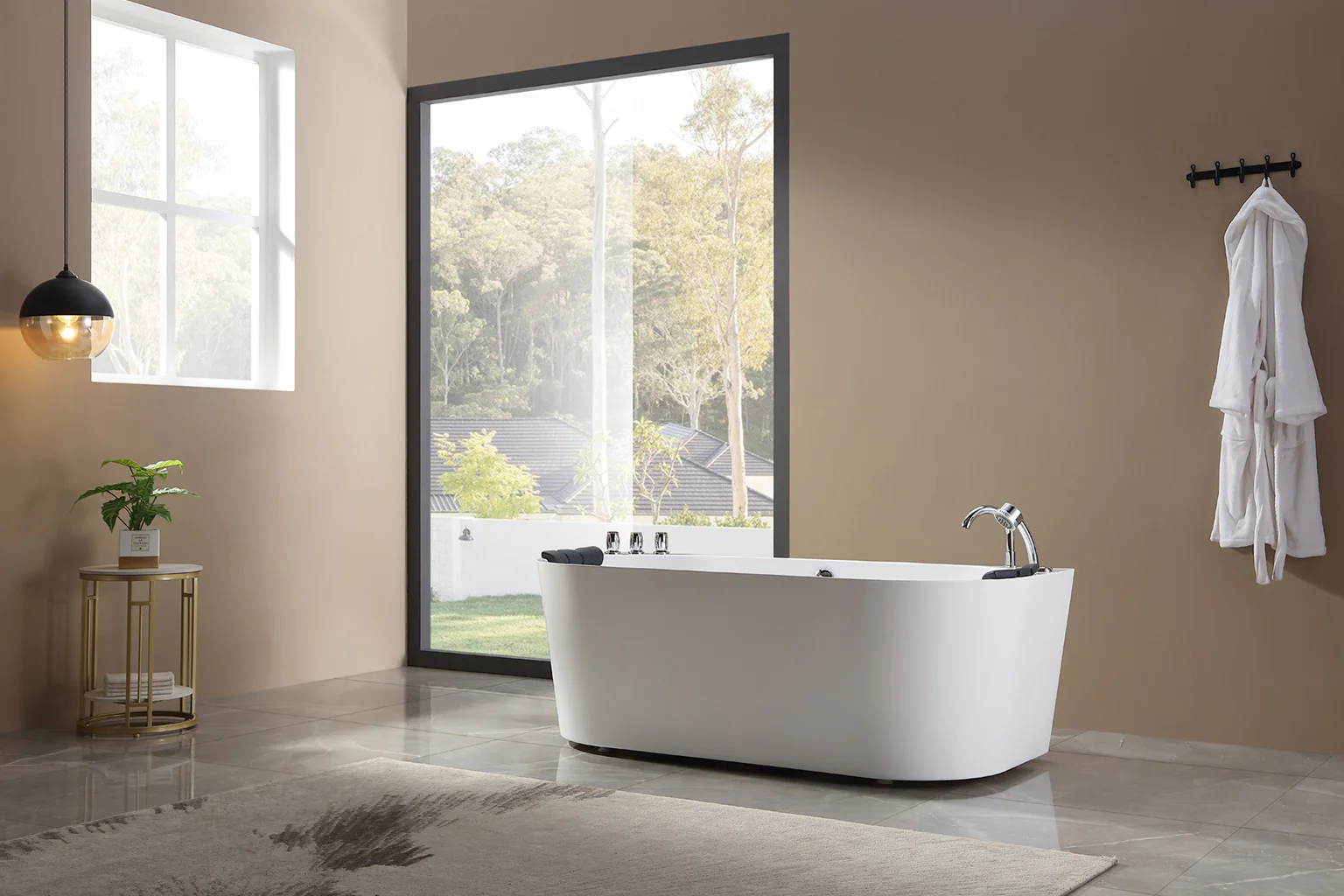When it comes to choosing a bathtub, the material matters just as much as the style. Two of the most popular materials on the market today are acrylic and cast iron. Each offers its own set of advantages and drawbacks, from weight and durability to heat retention and installation needs.
This article breaks down the key differences between acrylic and cast iron tubs to help you determine which is the better fit for your bathroom renovation or new construction project.
1. Material Composition
Acrylic Tubs
Acrylic tubs are made from sheets of vacuum-formed acrylic, reinforced with fiberglass for stability. This makes them lightweight and easier to shape into various styles, including oval, rectangular, and modern asymmetrical designs.
Cast Iron Tubs
Cast iron tubs are made by pouring molten iron into a mold, then coating it with a thick layer of enamel. The result is a heavy, durable tub with a glossy, smooth surface that resists scratches and stains.
2. Weight and Installation
Acrylic
Because they are much lighter than cast iron, acrylic tubs are easier to transport and install. They are especially ideal for second-story bathrooms or remodeling projects where floor reinforcement may be a concern.
Cast Iron
Cast iron tubs are extremely heavy—some can weigh over 300 pounds before adding water. Installation usually requires a reinforced floor and multiple people or specialized equipment to position the tub correctly.
3. Heat Retention
Acrylic
Acrylic tubs retain heat fairly well, but not as effectively as cast iron. They can lose heat more quickly, especially in cooler rooms. However, some acrylic models include insulation to improve thermal performance.
Cast Iron
One of the standout features of cast iron is its excellent heat retention. The thick material absorbs and holds heat, keeping your bathwater warm for longer periods—perfect for long soaks.
4. Durability and Maintenance
Acrylic
While acrylic is resistant to cracking, it can scratch more easily than enamel-coated surfaces. Fortunately, small scratches can often be buffed out with relative ease. It’s also more vulnerable to harsh chemicals, so cleaning requires gentler, non-abrasive products.
Cast Iron
The enamel coating on cast iron is extremely durable and resistant to wear, scratches, and discoloration. With proper care, a cast iron tub can last decades without losing its appearance.
5. Design Flexibility
Acrylic
Acrylic allows for greater flexibility in shapes and styles. You’ll find a wider range of modern, minimal, or even compact designs ideal for small bathrooms.
In the middle of your decision-making process, you might explore Vasca freestanding bathtubs, which offer both acrylic and composite-based options designed to mimic the appearance of cast iron while maintaining a lighter weight—providing durability and design without the installation challenges.
Cast Iron
Cast iron tubs are generally more limited in shape and design due to the nature of the casting process. They’re often found in traditional styles such as clawfoot or pedestal models.
6. Cost Comparison
- Acrylic tubs are generally more affordable, with prices ranging from budget to mid-range depending on design and size.
- Cast iron tubs are more expensive due to their weight, manufacturing process, and installation requirements. They are often considered an investment for long-term durability.
Conclusion
The choice between acrylic and cast iron tubs comes down to your specific priorities—whether it’s ease of installation, budget, long-term durability, or aesthetic preference. Acrylic tubs offer modern design flexibility and lightweight convenience, while cast iron delivers unmatched durability and superior heat retention. By understanding the differences, you can make an informed decision that suits both your style and functional needs.

